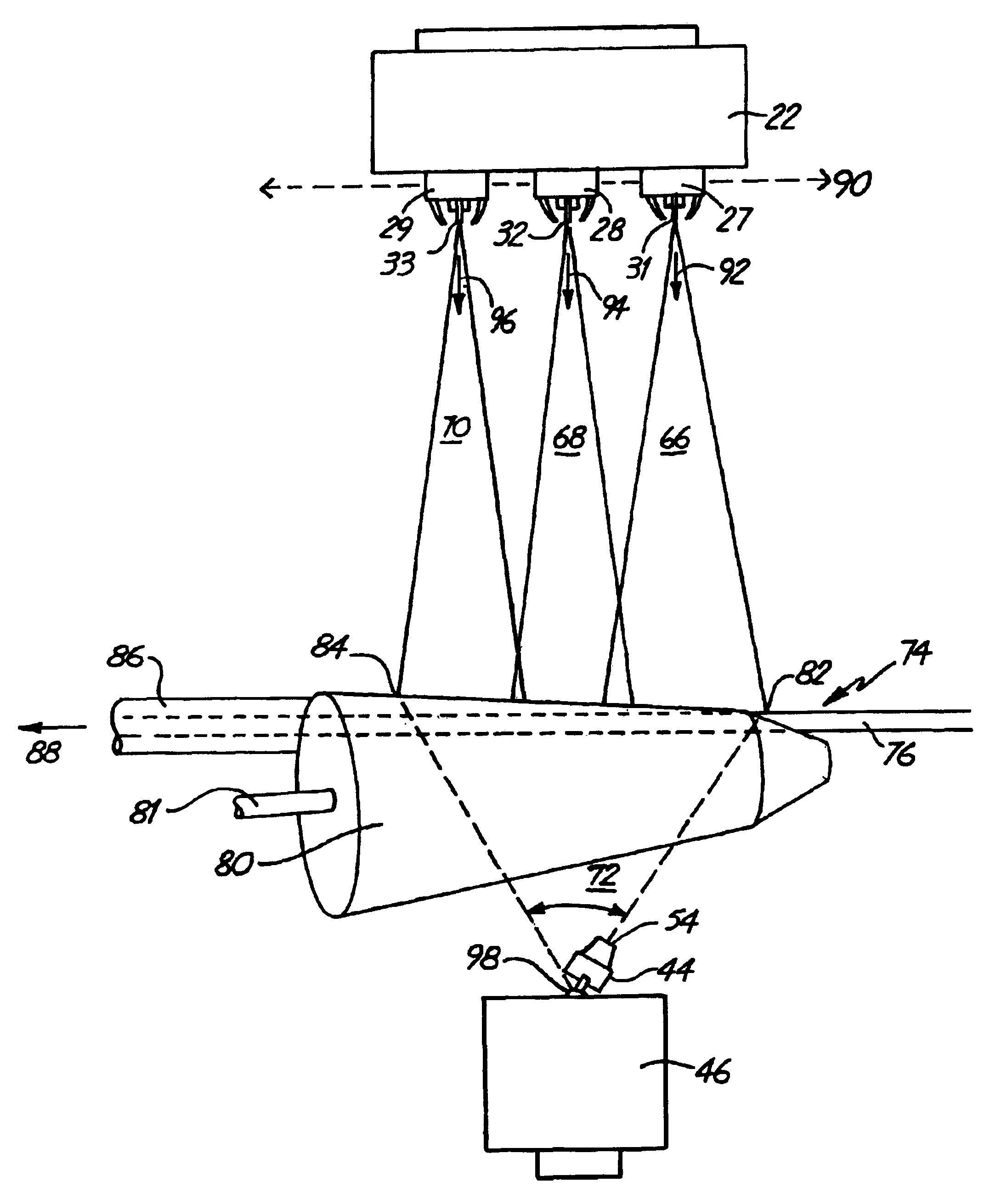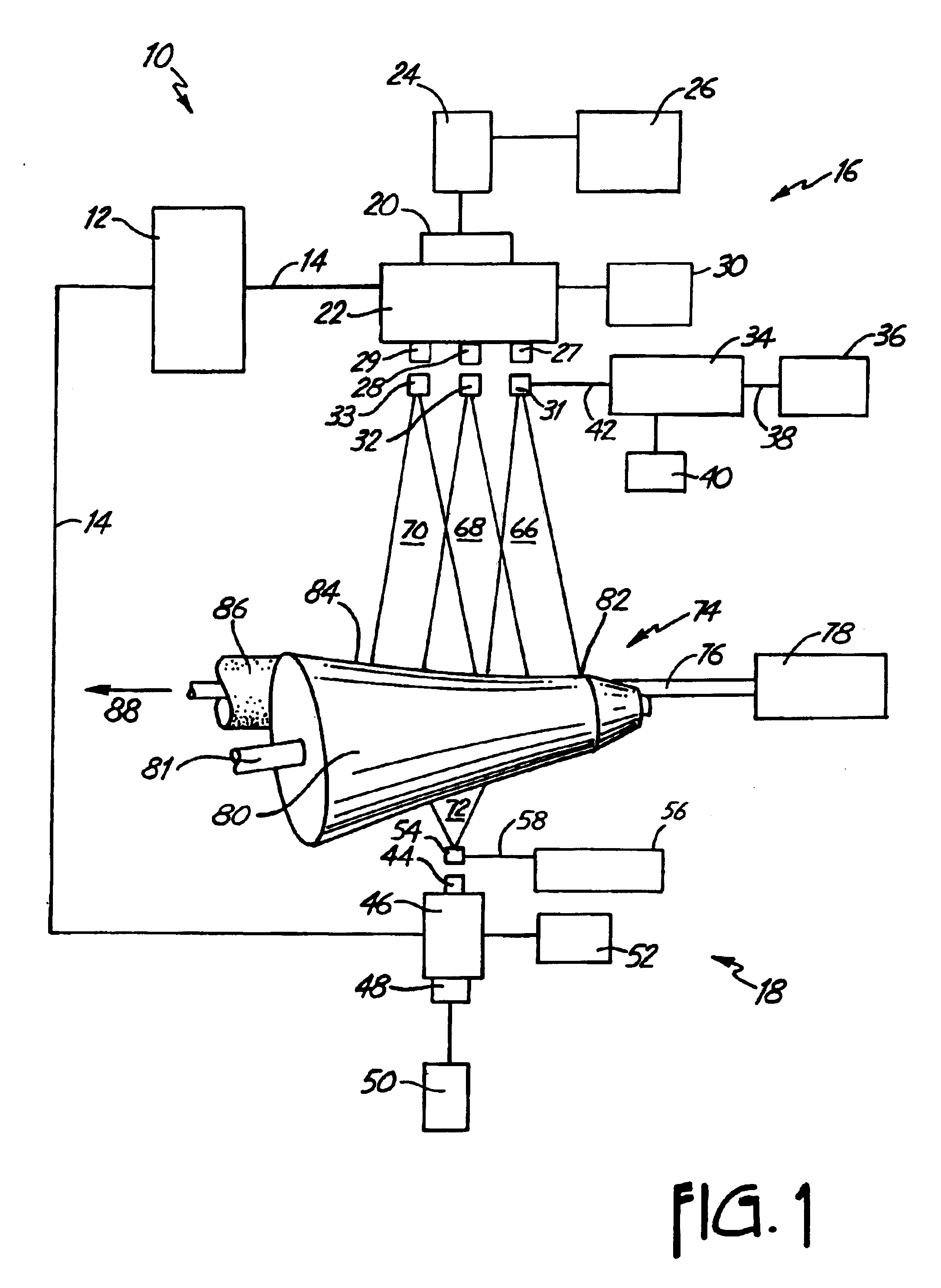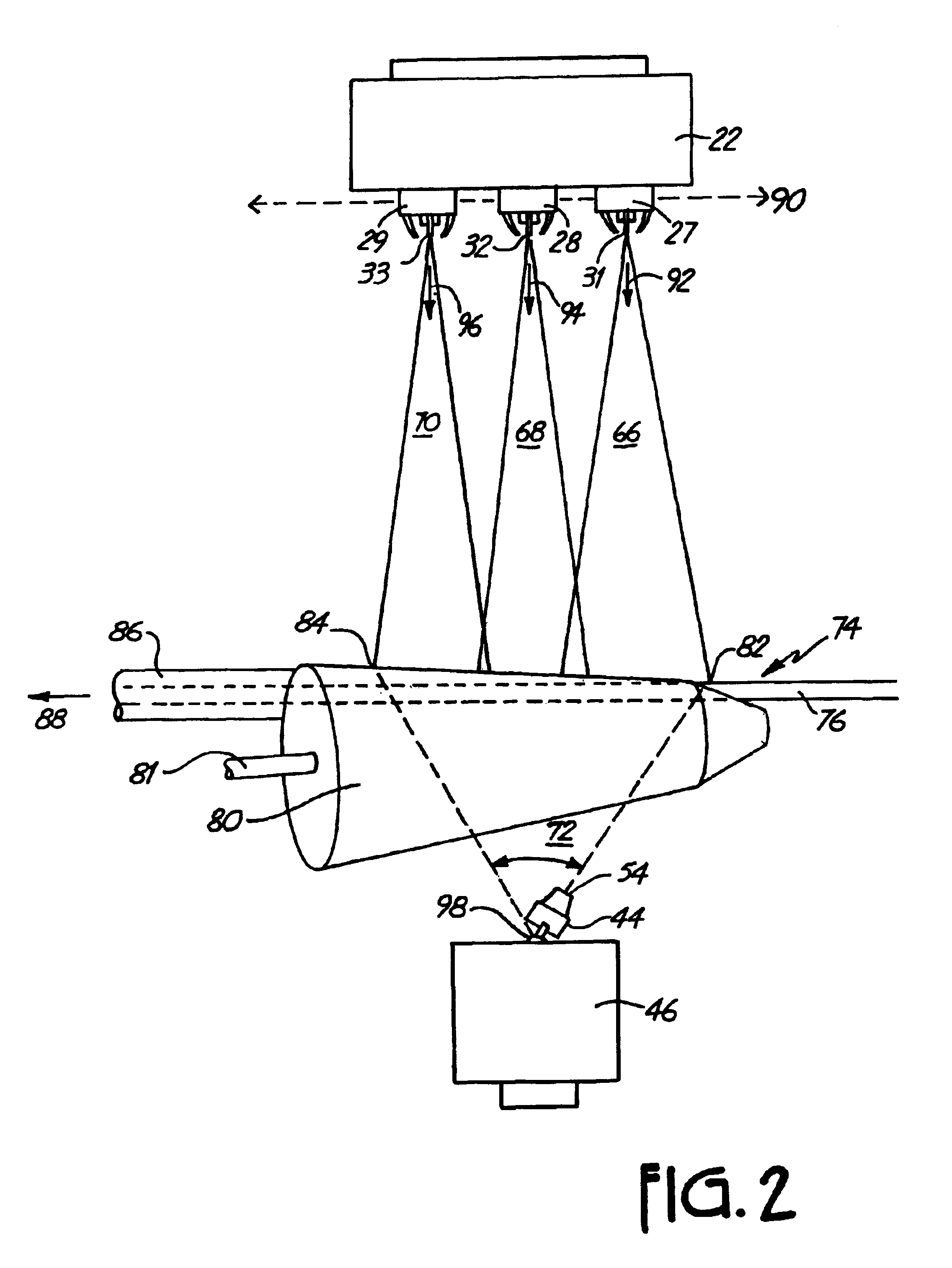Three-dimensional non-woven filter
a three-dimensional, non-woven technology, applied in separation processes, filtration separation, transportation and packaging, etc., can solve the problems of pall et al limitation, limitations which exist, and each has its own limitations
- Summary
- Abstract
- Description
- Claims
- Application Information
AI Technical Summary
Benefits of technology
Problems solved by technology
Method used
Image
Examples
example 1
[0089]Comparing a filter of the present invention with a standard filter, the following results were found for filters for a 10 micron particle size (A.C. fine test dust):
[0090]
crush strengthweight of 10″lifedirt holdingproduct(psi)cartridge (g)(minutes)capacity (g)invention931336060standard125 2052933control42143
[0091]In all three examples, the standard product is made by any of the prior art methods discussed in the background of the invention. The control product is made by the same method as the invention, but without the z filaments 110 and 172. This is accomplished by turning off the material pumps to nozzles 44 and 124. Additionally, the control filter cartridge was allowed more time to form in order to compensate for the decreased input of material and allow it to reach a comparable weight compared to the invention product using z filaments 110 and 172. Other operating conditions for formation of the “invention” and the “control” cylindrical cartridges are described below.
[0...
example 2
[0097]Comparing a filter of the present invention with a standard filter, the following results were found for filters for a 20 micron particle size (A.C. coarse test dust):
[0098]
crush strengthweight of 10″lifedirt holdingproduct(psi)cartridge (g)(minutes)capacity (g)invention8311985118standard100 16046 65control36129
[0099]In this example, the filter of the present invention was lighter than the standard filter, lasted about twice as long, and had almost twice the DHC of the standard filter. However, it had a lower crush strength. Applying the formula above, Mratio-invention=4.1 and Mratio standard=2.0. Thus, the filter of the present invention performs better than the standard product. The control product was tested only for crush strength. At a weight comparable to the invention product, the control product exhibited less than half the crush strength of the invention product.
[0100]In this example, the filter of the present invention was produced using primary fiber filament patter...
example 3
[0104]Comparing a filter of the present invention with a standard filter, the following results were found for filters for a 30 micron particle size (A.C. coarse test dust):
[0105]
crush strengthweight of 10″lifedirt holdingproduct(psi)cartridge (g)(minutes)capacity (g)invention75113105120standard80152 50 73control43106
[0106]In this example, the filter of the present invention was lighter than the standard filter, lasted about twice as long, had a much greater DHC, and had a comparable crush strength. Applying the formula above, Mratio-invention=2.7 and Mratio-standard=1.3. Thus, the filter of the present invention performs better than the standard product. The control product was tested only for crush strength. At a weight comparable to the invention product, the control product exhibited significantly lower crush strength compared to the invention product.
[0107]In this example, the filter of the present invention was produced using primary fiber filament patterns 66, 68, 70 and 120 ...
PUM
| Property | Measurement | Unit |
|---|---|---|
| diameters | aaaaa | aaaaa |
| temperature | aaaaa | aaaaa |
| size | aaaaa | aaaaa |
Abstract
Description
Claims
Application Information
 Login to View More
Login to View More - R&D
- Intellectual Property
- Life Sciences
- Materials
- Tech Scout
- Unparalleled Data Quality
- Higher Quality Content
- 60% Fewer Hallucinations
Browse by: Latest US Patents, China's latest patents, Technical Efficacy Thesaurus, Application Domain, Technology Topic, Popular Technical Reports.
© 2025 PatSnap. All rights reserved.Legal|Privacy policy|Modern Slavery Act Transparency Statement|Sitemap|About US| Contact US: help@patsnap.com



